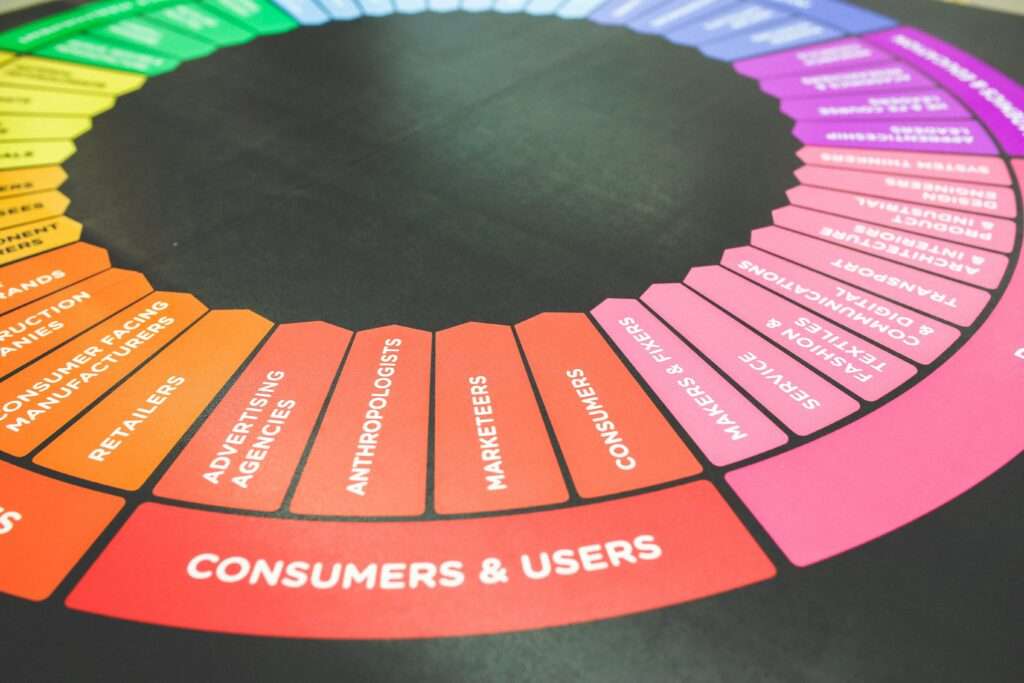Top 10 Digital Marketing Strategies for Small Businesses

I. Importance of Digital Marketing for Small Businesses
Digital marketing has become a vital ingredient for the success of small businesses today.
- Accessibility to a Wider Audience: Gone are the days when businesses were limited to their local area. With digital marketing, a small business can reach potential customers from anywhere in the world. This makes it easier to find niche markets and target specific audiences.
- Cost-Effectiveness Compared to Traditional Marketing: Small businesses often operate on tight budgets. Digital marketing offers various strategies, like social media and email marketing, that can be much less expensive than traditional advertising methods, such as print media or billboards.
- Ability to Measure and Analyze Performance: One of the best aspects of digital marketing is the ability to track your efforts. You can see what’s working and what’s not through various analytics tools. This data allows for informed decisions moving forward.
Overview of the Article
Overview of the Article
Brief Introduction to the Top Strategies: In this article, we’ll explore the top ten digital marketing strategies every small business should know. Whether it’s enhancing your website or leveraging social media, there’s something here for everyone.
The Impact of Effective Digital Marketing: Utilizing these strategies effectively can lead to increased visibility, higher engagement, and ultimately, more sales.
Encouragement to Assess Current Marketing Efforts: Before diving into these strategies, take a moment to evaluate your current marketing efforts. What’s working? What could use improvement?
II. Build a User-Friendly Website
A. Importance of Website Design
A well-designed website is crucial for making a positive first impression.
First impressions matter: You typically only get one chance to make a good impression. A clean, professional design can help establish credibility and build trust with visitors.
Mobile responsiveness: With more people browsing on their phones, it’s essential that your site looks good and functions well on mobile devices.
Clear Navigation Structure: Make it easy for users to find what they are looking for. A straightforward navigation bar can keep visitors on your site longer.
B. Essential Elements of a Business Website
A website needs several key features to be effective.
Contact Information Accessibility: Having your contact details readily available helps customers feel they can easily reach out for more information.
Quality Content and Blogging: Blog posts that provide value can improve your online presence and drive traffic. Share useful information related to your industry.
Conversion Rate Optimization Techniques: Use techniques like clear calls-to-action and easy forms to help convert visitors into customers.
C. Regular Maintenance and Updates
Keeping your website updated is just as important as any initial design work.
Software Updates for Security: Regularly update your website’s software to protect it from security threats.
Keeping Content Fresh and Relevant: Regularly revisiting and updating content keeps your audience engaged and improves your search rankings.
Monitoring Website Performance: Use tools to track site speed and visitor behavior to ensure everything is running smoothly.
III. Utilize Pay-Per-Click Advertising
A. Understanding PPC Basics
PPC can be a quick way to drive traffic to your website.
How PPC Works: You pay each time someone clicks on your ad, allowing for cost-effective advertising if done right.
Types of PPC Ads: Explore options like Google Ads, social media ads, and display advertising to determine what fits best for your business.
Setting a Budget: Decide how much you want to spend and monitor your campaigns to ensure a good return on investment.
B. Creating Compelling Ad Copy
Strong ad copy can make a significant difference in performance.
Writing Effective Headlines: A catchy headline grabs attention and encourages clicks.
Crafting Concise Descriptions: Keep descriptions brief and focused. Your audience should immediately understand what you’re offering.
Utilizing Extensions: Use ad extensions to provide additional information, like phone numbers or links to specific pages on your website.
C. Tracking and Optimizing PPC Campaigns
Just like other marketing strategies, monitoring your PPC performance is crucial.
- Key Performance Indicators: Track metrics like click-through rates and conversion rates to measure effectiveness.
- Importance of Conversion Tracking: Setting up conversion tracking helps you see the real ROI from your ads.
- Making Adjustments Based on Data: Use your findings to refine your campaigns continually and improve results.
IV. Invest in Search Engine Optimization (SEO)
A. Understanding SEO Basics
SEO is about getting found online and should be a priority.
On-Page SEO Techniques: Optimize your content, titles, and meta descriptions to help search engines understand your site.
Off-Page SEO Tactics: Build backlinks and engage with other sites to increase your site’s authority.
Technical SEO Considerations: Ensure your website loads quickly and is easy for search engines to crawl.
B. Keyword Research and Implementation
Finding and using the right keywords is essential for ranking.
Utilizing Tools for Keyword Discovery: Tools like Google Keyword Planner or Ahrefs can help you find relevant terms.
Long-Tail Keywords vs. Short-Tail Keywords: Long-tail keywords might have less competition and higher conversion rates, making them a smart choice for small businesses.
Keyword Placement Best Practices: Place keywords naturally throughout your content, including headlines, to improve your chances of ranking.
C. Keeping Up with SEO Trends
SEO is always changing, and staying updated is key.
Algorithm Updates: Keep an eye on updates from search engines, as they can impact your site’s visibility.
Mobile-First Indexing: Ensure your site is mobile-friendly, as search engines prioritize mobile versions for indexing.
Voice Search Optimization: Optimize for voice search by considering how people speak questions.
V. Email Marketing Campaigns
A. Building an Email List
An effective email marketing strategy begins with building a robust list.
Importance of Subscriber Consent: Always ask for permission to send emails. This builds trust and ensures you’re reaching interested potential customers.
Methods for List Growth: Offer valuable content like eBooks or discounts in exchange for email sign-ups.
Segmenting the Email List for Targeting: Not all subscribers are the same. Tailor your emails based on their preferences or past behaviors.
B. Crafting Effective Email Content
The success of your emails often comes down to the content within them.
Writing Compelling Subject Lines: An engaging subject line can significantly increase open rates. Make it interesting and relevant.
Personalization Techniques: Use the recipient’s name or personalized recommendations to create a more meaningful connection.
Call-to-Action Strategies: Place clear calls to action to guide your readers on what to do next, be it visiting your website or making a purchase.
C. Measuring Email Campaign Performance
Keep track of how your emails are performing.
Essential Metrics to Track: Pay attention to open rates, click-through rates, and conversions to gauge success.
A/B Testing Variations: Experiment with different subject lines or content styles to see what gets the best response.
Adjusting Strategies Based on Results: Use data from your campaigns to refine your approach continuously.
VI. Leverage Social Media Marketing
A. Choosing the Right Platforms
Choosing the correct social media platforms can greatly impact your marketing success.
Assessing Target Audience Demographics: Know where your potential customers are most active. Different demographics gather on different platforms.
Platform-Specific Strategies: Each platform has its own audience and best practices. Tailor your content to fit the platform—think visuals for Instagram and professional posts for LinkedIn.
Analyzing Competitor Presence: Keep an eye on your competitors. What platforms are they using, and what seems to be working for them?
B. Creating Engaging Content
Content is at the heart of social media marketing.
Types of Content: Visuals, Videos, and Text: Mix it up! Use images and videos in addition to text to capture attention more effectively.
Establishing a Posting Schedule: Consistency is key. Develop a posting calendar so your audience knows when to expect new content.
Utilizing Stories and Live Features: Features like Instagram Stories or Facebook Live can create a sense of urgency and encourage more direct engagement.
C. Building Community and Engagement
Social media is all about connecting with your audience.
- Responding to Comments and Messages: Being active in responding to customer inquiries fosters a sense of community.
- Encouraging User-Generated Content: Ask customers to share their experiences with your product. It’s a great way to build trust and authentic engagement.
- Running Contests and Giveaways: Competitions can spice things up and attract new followers while rewarding your existing ones.
Conclusion
1. Recap of Key Strategies
In conclusion, we’ve covered ten essential digital marketing strategies that can make a significant difference for small businesses. From building a user-friendly website to harnessing the power of social media and PPC, each approach offers unique benefits.
2. Encouragement to Start Implementing
It’s time to take action and implement these strategies. Start small if you need to, but don’t let uncertainty hold you back from exploring new ways to reach your audience.
3. Final Thoughts on Continuous Learning in Digital Marketing
Digital marketing is always evolving. Stay curious, keep learning, and adapt to new trends and techniques as you grow your small business.
FAQs
There is no one-size-fits-all answer, as the best strategy will depend on your target audience and business model. A combination of several strategies is often most effective.
It’s generally advised that small businesses allocate around 5-10% of their revenue towards marketing, but this can vary based on your goals and industry.
Utilizing analytics tools can help track performance metrics like website traffic, engagement rates, and conversions. Setting clear goals will make it easier to measure success.

